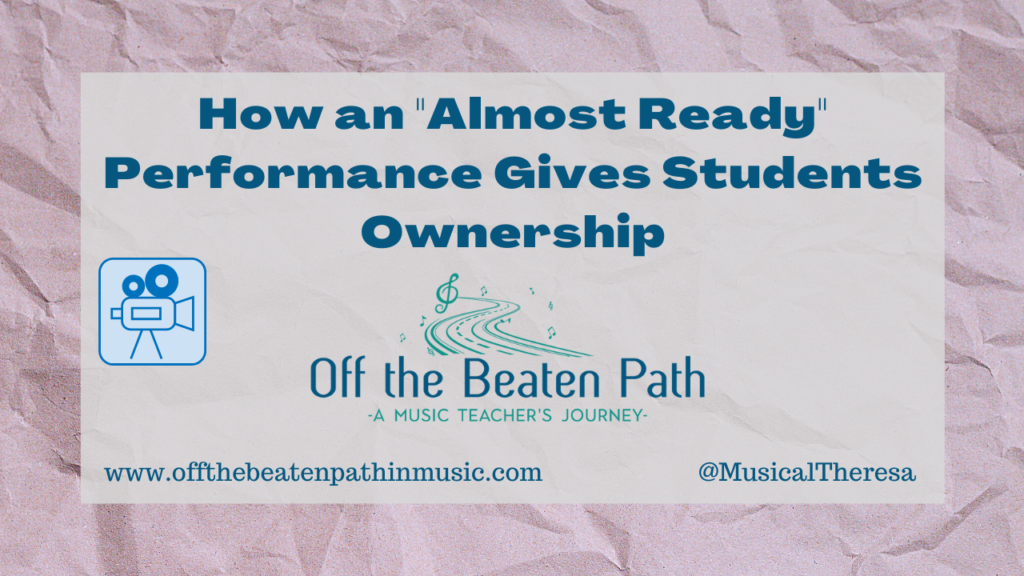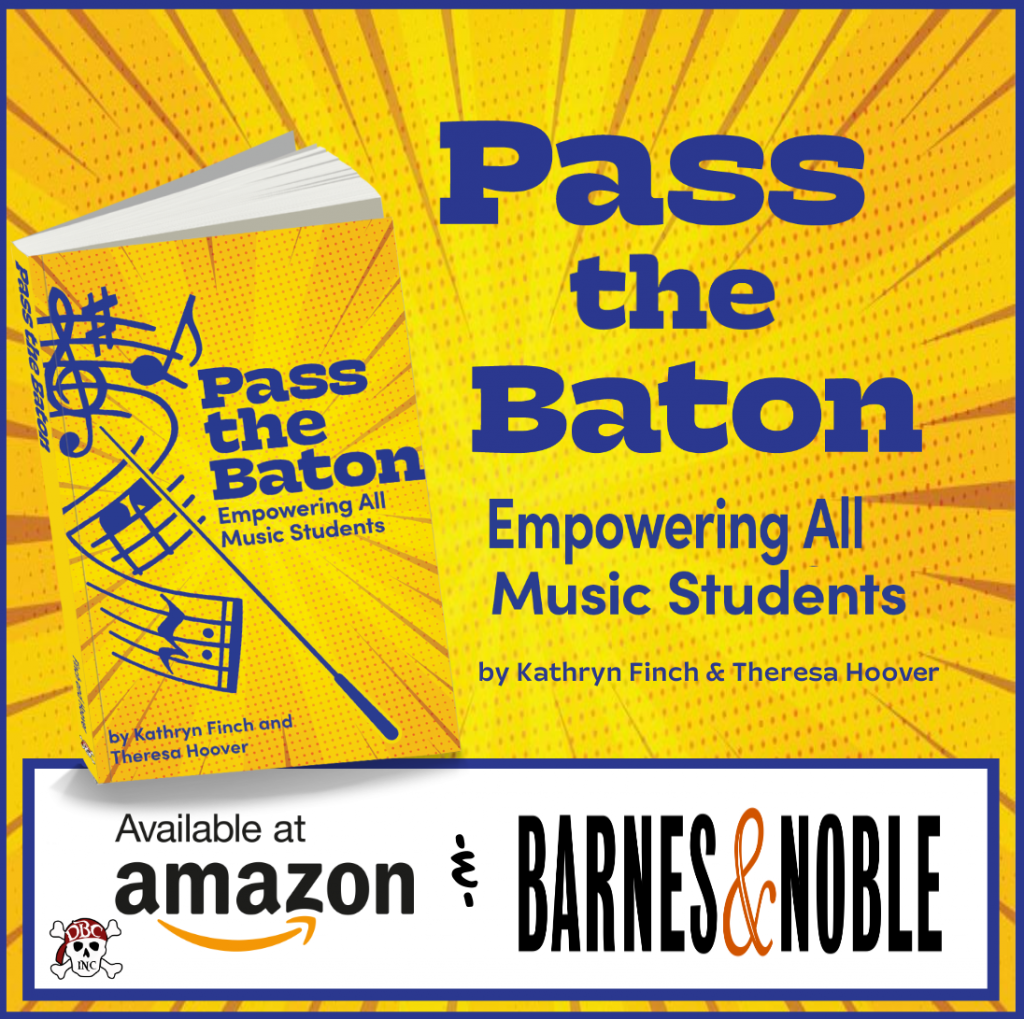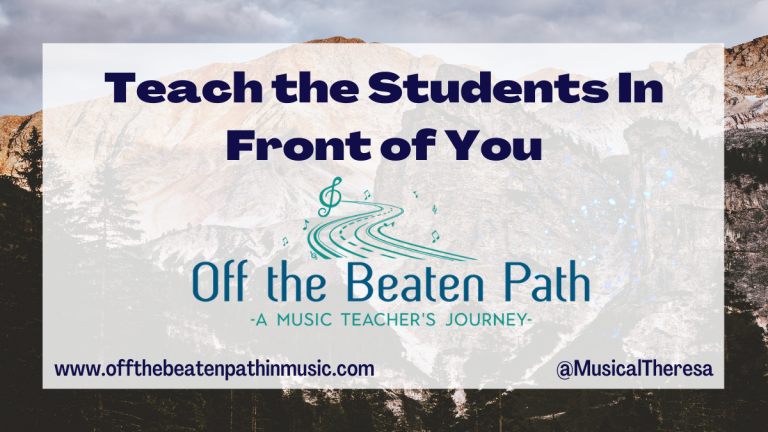How an “Almost Ready” Performance Gives Students Ownership
As musicians, we’ve all been there. It’s the week before a performance and we wonder, am I really ready for this? Ready to get in front of an audience? Do I know the music well enough? Did I prepare everything thoroughly? We add a whole other layer to this when we ask the same questions of our students! Are they prepared? Did they practice enough? Is there something I should have done differently?

While I think some level of questioning is normal, and will probably never go away, one thing I’ve seen ease minds is the “almost ready” performance. For an almost ready performance, the location doesn’t matter, and an audience is unnecessary. What’s important is the timing. It’s close enough to the actual performance that the students are ready, but there’s still enough time to make revisions. By having students complete an almost ready performance, you give them the ability to take ownership of where they are and determine what needs to be done before the actual event.
The Process
The almost ready performance was something I did with students when they were preparing for solo and small ensemble events. One or two weeks before the event, students would record themselves performing the music, start to finish, without stopping. Then, students would have to watch their videos and give themselves feedback, stating what went well and what still needed work. They could comment on everything and anything – notes, rhythms, expression, posture, “stage presence” and more. The video format made it easy for students to see what an audience sees and hear things they might not notice while playing.
With the almost ready performance taking place 1-2 weeks before the actual performance, students had enough time to use the feedback to make improvements for their final performance. When we emphasize improvements over perfection, we show students that the learning process is just as important as the final product.
This could also work for ensemble performance, where students could assess their own performance, along with that of their section or the full ensemble. In this case, the teacher could record the entire ensemble playing and share that with the students. Or, students could individually record themselves using personal devices placed on the music stand. This option will work (I’ve done it!) but the sound quality may not be as good.
The Feedback
While teacher feedback is always valuable, for this activity I’ve always tried to maintain a focus on the students’ self-assessment. Students have been receiving my feedback throughout the learning process, so at this point, so close to the performance, it’s time for students to take ownership of their performance. You may need to provide students with a rubric, or specific things to listen for in their performance, especially if they have never done this type of self-assessment.
Depending on your students, this could be a good place to incorporate peer feedback as well. Students can watch classmate’s videos and provide feedback using either a provided rubric or sentence starters. One thing I’ve found, especially with classes who are new to providing (and receiving) peer feedback, having students offer suggestions is a good way to ease them in. Suggestions feel less critical as they come from a place of wanting to help.
The Next Step
After students have watched and evaluated their almost ready performance, the next step is putting it in action! Give students time to practice their music, incorporate the feedback they received, and continue polishing their work. If you attach a grade to a performance, consider factoring in the students’ ability and willingness to make the improvements and revisions necessary. Knowing how to make something better is an important step in becoming an independent musician.
I typically use Flipgrid for the almost ready performance, but any video tool will work. With Flipgrid, it’s easy for students to leave video feedback, which many find is easier than typing their comments. Flipgrid is also a good option if you’re having students watch and give feedback to their classmates. Here is a pre-made Flipgrid topic you can use today: The “Almost Ready” Performance.
I hope you’ll give this a try with students. When we can give students the opportunity to evaluate their own musical performances and implement the necessary changes, they grow as both musicians and learners!

Looking for more ways to empower students surrounding performances? Check out these posts:
- Student-Centered Performances
- Planning With Not For: Involving Students in Concert Preparations
- Five Ideas to Try After a Concert
Have you checked out Pass the Baton: Empowering All Music Students yet? If not, what are you waiting for?
“This book is a must read for teachers who want to empower students to become self-sufficient lifelong learners. It is a guidebook for creating a vibrant classroom where student learning is the first priority.”
-Kristin Gomez, MA, Director of Orchestras at Jefferson Middle School & Abingdon Elementary School






